The Vatican Joins Israeli-Palestinian Conflict – Analysis
By Leonard Hammer*
In May 2015, the Comprehensive Agreement between the Holy See and the Palestinian Authority (PA) was signed. With this agreement, the Vatican formally acknowledged the “state of Palestine.” A spokesman for the Vatican confirmed, “It’s a recognition that the state exists.”[1]
The agreement establishes both the standing[2] and mode of interaction[3] between the Catholic Church and the PA (and by extension, Israel), and describes the church’s interests in the Holy Land.[4] In exchange for the Vatican’s formal recognition,[5] the PA agreed to provide a broad gamut of religious benefits,[6] not only for security for the local Catholic population to pursue its religious interests[7] but also for protection of key holy sites, property, and financial interests.[8]
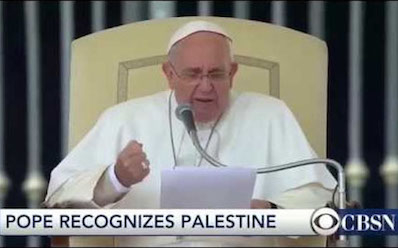
The Israelis, however, objected strongly, saying the agreement would make peace negotiations with the Palestinians more difficult.[9] Michael Freund, former deputy communications director to Prime Minister Benjamin Netanyahu, questioned whether the Vatican’s agreement was a return to the church’s “sordid history of anti-Semitism.”[10]
What are the implications of the 2015 agreement? What will it accomplish for each party? And what does it mean for Israel?
The Vatican’s Position
Prior to the creation of the State of Israel in May 1948, the Holy See refrained from taking sides in the Arab-Jewish conflict, preferring to adhere to its foundational principle of “remaining [a] stranger to all merely temporal conflicts” as provided in the 1929 Lateran treaty.[11] Thus, when the United Nations General Assembly convened on November 29, 1947, to vote on Resolution 181, partitioning Palestine into Jewish and Arab states, the Holy See (as a “permanent observer” at the United Nations) did not participate.
Of course, the Vatican did not remain aloof to developments in the Holy Land and their possible effects on the future of the Christian holy sites there. When, in the summer of 1937, a British royal commission proposed internationalizing the cities of Jerusalem and Bethlehem as a means of “ensuring free and safe access to them for all the world,”[12] the Holy See registered its desire to protect Jerusalem’s holy sites (while also seeking an additional international enclave near the Sea of Galilee), underscoring its enthusiastic support for territorial internationalization—what eventually became known as the corpus separatum.[13] Likewise, despite abstaining during the vote on Resolution 181, the Vatican endorsed its recommended internationalization of Jerusalem;[14] and while this corpus separatum was never implemented due to the ongoing Arab-Israeli conflict and political infighting between interested states, the Holy See remained committed to the idea as the foremost means to safeguarding Christianity’s holy sites.[15]
Thus, for example, in October 1948, the Holy See published an encyclical, In Multiplicibus curis, proposing to “Give Jerusalem and its outskirts … an international character which, in the present circumstances, seems to offer a better guarantee for the protection of the sanctuaries.”[16] On Easter 1949, amidst ceasefire negotiations between Israel and its Arab invaders, the pope published another encyclical, Redemptoris Nostri Cruciatus, “the passion of our Redeemer,” focusing on the torments of the Holy Land, and stating that “Jerusalem and its vicinity … should be accorded and legally guaranteed an ‘international status,'”[17] thereby further entrenching the Holy See’s support for corpus separatum.
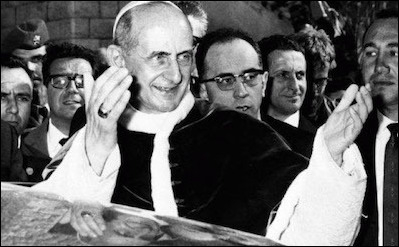
In subsequent decades, the Vatican made few official statements regarding Jerusalem’s status, seemingly waiting for more opportune moments to raise the issue.[18] In December 1963, Pope Paul VI announced his decision to go on a pilgrimage to the Holy Land and pray for the success of the Second Vatican Council and for peace and Christian unity.[19] Despite the Holy See having no official diplomatic relations with either Israel or Jordan, the latter of which at the time occupied the West Bank including east Jerusalem, this historic visit followed strict protocols reserved for visits of heads of states. In Israel, President Zalman Shazar held a reception at the historical site of Megiddo for the papal delegation and accompanied him to the Mandelbaum crossing in Jerusalem. In the city, the pope also met with Greek Orthodox Ecumenical Patriarch Athenagoras.[20] The international media followed the pope’s every step, describing the visit as “a great act of sacred theatre.”[21]
Israeli scholars sometimes argue that the Catholic Church’s policy toward Israel “was fundamentally hostile,”[22] but doing so ignores or downplays the deep transformation in the Holy See’s attitude that took place toward the Jewish people in the course of the twentieth century. Vatican II fundamentally changed the Holy See’s policies toward the Jews and ultimately its policies toward the (Christian and non-Christian) population of the Holy Land. The Nostra Aetate (In Our Times) was one of the Second Vatican Council’s (October 28, 1965) final declarations dealing with the relation of the church to non-Christian religions. Regarding the Jews, the document offered new teaching whereby “the Jews should not be presented as rejected or accursed by God.” Most significantly, it freed the Jews from the charge of deicide because “what happened [to Christ] in His passion cannot be charged against all the Jews, without distinction, then alive, nor against the Jews of today.”[23] The Nostra Aetate served as an important declaration that opened up the possibility for eventual relations with the Jewish state, particularly in recognizing the Jewish people’s right to exist and the role of the Vatican in upholding religious freedom.[24]
The Six-Day War of June 1967, in which Israel captured Jerusalem and the West Bank, marked the next significant milestone for the Holy See. During the war, Pope Paul VI pressured Israel to declare Jerusalem an open city under international control, but Israel had already celebrated what it termed the city’s reunification.[25] However, Israel immediately provided legal protection for free worship and access to sanctuaries, promised to safeguard the holy sites,[26] and offered to establish official diplomatic relations with the Holy See. The Vatican, however, while effectively discarding its demand for the territorial internationalization of the holy sites and instead focusing on ensuring their internationally guaranteed statute,[27] stuck to its old principle that a formal agreement would not be tenable in the absence of peace between Israel and its Arab neighbors.[28] It was only after the September 1993 signing of the Declaration of Principles (DOP) by Israel and the Palestine Liberation Organization (PLO) that the Holy See moved ahead and entered into agreements first with Israel and Jordan,[29] and then with the Palestinians.
Agreements with Israel
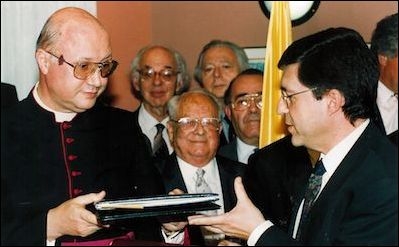
The shift by the Holy See toward Israel was manifested in 1993 when the two sides concluded the Fundamental Agreement. Israel approached the matter from a primarily political perspective, although keenly aware of its broader historic significance for Jewish-Catholic relations. The Holy See adhered to its goals of strengthening its position among local Catholics, protecting its property interests and holy sites in Israel, and ensuring that key rights connected to its religious missives were protected and upheld.[30] The Fundamental Agreement provided for each side to uphold basic human rights, such as freedom of religion, and to combat discrimination and anti-Semitism. Along with the 1997 Legal Personality Agreement, the Holy See maintained oversight over land sales, and the two sides agreed to abide by the status quo as it then stood under Israeli law. The agreement further noted the church’s educational and charitable functions, foresaw a financial agreement concerning its property and tax status (something that has not yet materialized despite prolonged negotiations between the two sides), and provided general language regarding the jurisdictional capacities of each side. Article 11 also reflected the 1929 Lateran treaty calling on the Holy See to remain outside of temporal conflicts, using additional language stating that the principle “applies specifically to disputed territories and unsettled borders,” thereby clearly referencing areas under Israeli control post-1967 (including east Jerusalem).
The 1993 accord outlined the broad contours of the mutual understanding, with both sides fully aware that future agreements would deal with specific issues such as legal personality and financial arrangements. Nonetheless, given the lack of an ensuing financial agreement and emerging property issues over important areas, such as the Cenacle located on Mount Zion, relations between the Holy See and Israel remain lukewarm at best.
John Paul II visited Israel in 2000 (shortly before the outbreak of the “al-Aqsa Intifada”) for a carefully crafted formal state visit, including viewing religious shrines and meeting with politicians such as Israel’s prime minister Ehud Barak and president Ezer Weitzman as well as meeting Palestinian Authority president Yasser Arafat in Bethlehem. John Paul II, and later Pope Benedict XVI, also visited Yad Vashem as well as the Dheisheh refugee camp. Unlike their predecessor in 1964, who was careful not to utter the name of the still unrecognized State of Israel, John Paul II engaged directly with the need to promote dialogue between the three Abrahamic religions.
Agreements with the Palestinians
In response to the 1993 Fundamental Agreement and the 1997 Legal Personality Agreement between the Holy See and Israel, the PLO initially concluded a general Basic Agreement with the Holy See in 2000.[31] The perceived need by the Holy See to protect important holy places (be they in Israel or areas under PA control) and the desire to safeguard Christians as a whole served as the key impetus for engaging the PA. Viewing the PLO-dominated PA as a precursor to a nascent state, the Holy See wanted to ensure it had relations with this entity. Broader issues also led to the Basic Agreement, given the importance of proper treatment of Christians in the PA (and beyond, in the wider Arab world); decreasing Christian population in these territories; sale and control of church land; the potential decrease of the Holy See’s influence over local authorities; and emerging cultural gaps between mainly European church leaders and their local believers.[32]
The preamble to the short 2000 agreement with the PLO referred to the inalienable right of the Palestinian people to achieve self-determination under international law, emphasized the need for a just peace, and called on all sides to avoid unilateral actions that alter the status of Jerusalem (along with a veiled reference to the city’s internationalization). But the actual articles of the agreement with the PA focused on religious rights and freedoms, the international human right to freedom of conscience and religion, discrimination and equality, the entrenchment of the status quo sites, and general protections for the church and its believers to carry out their traditions and practices, along with financial and legal functions. These were stated in a broad fashion.
The papacy under Pope Francis (2013- ) is proving a more engaged political actor, tackling such issues as climate change, migration, refugees, and homosexuality. Following in the footsteps of Pope Paul VI, Francis is also laboring to conclude the historic reconciliation of the Catholic Church with the Orthodox Church. His pilgrimage to the Holy Land in 2014 was thus coordinated with the Ecumenical Greek Orthodox Patriarch of Constantinople, celebrating fifty years since the meeting in Jerusalem of their predecessors. Furthermore, Pope Francis, in a recent speech in honor of Nostra Aetate, was quoted saying, “There may be political disagreements between governments and on political issues, but the State of Israel has every right to exist in safety and prosperity.”[33] Reflecting on accomplishments during 2015, Francis noted diplomatic agreements with Chad and Kuwait and the “agreement signed and ratified with Palestine” that demonstrated
how peaceful co-existence between the followers of different religions is possible when religious freedom is recognized and practical cooperation in the pursuit of the common good, in a spirit of respect for the cultural identity of all parties, is effectively guaranteed.[34]
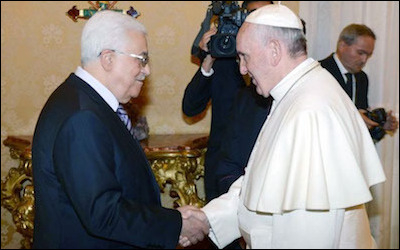
The 2015 Comprehensive Agreement signed with the Palestinian Authority was a major political boon for the PA. In return for reiterating support for the two-state solution—the authority’s internationally-voiced position since the onset of the Oslo process (as opposed to the denigration of the option to its Palestinian subjects)—the PA obtained not only the Holy See’s recognition of the “State of Palestine” but also its criticism of Israel’s actions in Jerusalem and the West Bank more generally. The language in the Holy See-Israel 1993 agreement used the term “disputed territories and unsettled borders” to describe the areas under Israeli control (terms generally used by Israel’s foreign ministry when discussing the post-1967 situation). By contrast, the 2015 agreement calls for an “equitable solution for the issue of Jerusalem, based on international resolutions,” stating that “unilateral decisions and actions altering the specific character and status of Jerusalem are morally and legally unacceptable,” mirroring the language of the 2000 Basic Agreement between the Holy See and the PLO.
Significantly enough, the agreement was publicly released—in sharp contrast to the Holy See’s general abstention from releasing its agreements with Arab states. This could be because of the Vatican’s desire to ensure proper protection for key holy sites and Catholic laity during a difficult time, or because of its wish to prod Israel into further engagement given the years-long stalemate in the peace process. The 2015 agreement is long and comprehensive; availing its text to the public can serve as a potential impetus (and possible blueprint) for Holy See-Israeli negotiations.
The Holy See’s End Game
The Holy See has an important goal to provide clear protections for important status quo and other key holy sites as well as members of the church. Thus, it felt compelled to engage Israel and the Palestinians, walking a fine line trying to appease both sides while protecting key interests. This is even more troubling since it constantly shifts as both Israelis and Palestinians jockey for international position, legitimacy, and control.
One of the three sections of the 1929 Lateran pacts was the Treaty of Conciliation that established Vatican City as an independent entity (as well as restoring the sovereignty of the pope as a monarch, removed in 1870 following the Franco-Prussian war). Article 24 of the Treaty of Conciliation provides that:
In regard to the sovereignty appertaining to it also in international matters, the Holy See declares that it desires to take, and shall take, no part in any temporal rivalries between other States, nor in any international congresses called to settle such matters, save and except in the event of such parties making a mutual appeal to the pacific mission of the Holy See, the latter reserving in any event the right of exercising its moral and spiritual power.
Thus Article 24 calls for a balance between the Holy See not involving itself in any temporal rivalries but allowing it to exercise moral and spiritual power, especially when working in the framework of a pacific mission. Indeed, this is reflected in the perception of the Holy See as possessing an international legal personality from its spiritual power and position, rather than from the more traditional elements of statehood, such as its small territory.[35]
The Holy See has the ability to serve as a broker for peace, understood as encompassing key values of life: economic rights, freedom of conscience, a need to harmonize ideals with national interests, and the pursuit of justice (and not warfare) through dialogue and mutual respect.
Article 24 is also coupled with the Holy See’s desire to secure the church’s material position to pursue its spiritual mission. Its international relations are not solely pragmatic but a form of theology combined with fundamental human rights norms, a focus on developmental concerns, a striving for neutrality, with an overlay of monarchial maneuvers.[36]
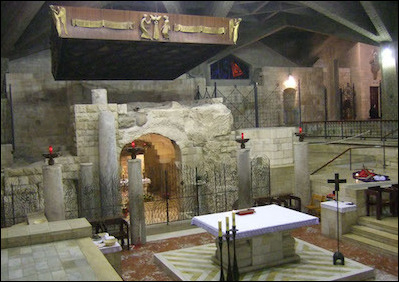
But different interests are at work when accounting for the Holy See and its relations with Israel and the PA, particularly with respect to Christian holy sites. There seems to be a desire by the Vatican to wrest Christian holy sites from the control of Muslim and Jewish governing authorities with a view toward internationalization and human rights ideals that protect and preserve the Catholic faithful in the area (be they under Israeli or Palestinian control).
The shift in the Holy See’s policy bends the framework devised by the Lateran pact in terms of involving the Holy See in local conflicts as evidenced, among other things, by its recognition of Palestine as a state and including language in all three agreements that affects in different ways the status of the post-1967 territories.
Conclusion
Some of the open-ended issues that remain after the 2015 agreement with the Palestinians are just as important as the agreement itself. Unmentioned in the agreement is the matter of conversion from Islam to Christianity, an act punishable by death by Islam. Will the PA tolerate conversion to Christianity? What if there is an Islamist shift in the PA’s governmental composition, a rather realistic possibility given the rise of Hamas and other Islamist groups? Is proselytism to be tolerated? The 2015 agreement seems to allow free expression to the Catholic Church without delineating the boundaries. As such, it might serve as a foundation for enhancing protections for Christians in other parts of the Arab world.
The tax concessions also merit further attention. The 2015 agreement calls for a joint commission to address future tax matters between the parties. How the agreement is interpreted and applied can contribute to clarifying the global status of the Catholic Church as a charitable organization.
From an operational standpoint, the PA took upon itself broad obligations to ensure the human rights of an internationally visible religious group. Its compliance with these obligations can go a long way toward entrenching it as a legitimate international actor.
Finally, one also must consider the general role of religious leaders in ongoing conflicts. Will the 2015 agreement influence the Holy See’s position as an actor in the region? Did it compromise too much at the expense of its relations with Israel, or will this have the opposite effect and bring the Jewish state back to the negotiating table with the Holy See? Indeed, where will church relations with Israel stand after the 2015 agreement given that the two parties are quite close to a financial agreement after years of negotiations? The agreement can serve as a strong signal that a financial arrangement is achievable without the Israelis giving up too much political capital. Israel can also seize on its contours and use them as a blueprint for its ongoing negotiations with the Holy See.
The 2015 agreement thus serves the immediate purposes of the Holy See in its relations with the Palestinians and offers a potential future framework with Israel to reach an accord on important outstanding issues.
About the author:
*Leonard Hammer lectures at the Rothberg International School, the Hebrew University of Jerusalem, and holds the David and Andrea Stein Visiting Chair on Modern Israel Studies at the Judaic Studies Center, University of Arizona.
Source:
This article was published by The Middle East Quarterly, Fall 2017, Volume 24, Number 4.
Notes:
[1] Haaretz (Tel Aviv), May 13, 2015.
[2] Comprehensive Agreement between the Holy See and the Palestinian Authority, Vatican Apostolic Palace, June 26, 2015, art. 1.
[3] See, for example, ibid., arts. 27, 28.
[4] Ibid., art. on the status quo sites.
[5] Ibid., preamble, art. 1.
[6] See, for example, ibid., chaps. IV and V.
[7] Ibid., chap. III.
[8] Ibid., chap. V.
[9] Foreign Policy (New York), June 26, 2015.
[10] Michael Freund, “Pope Francis is aligning himself against Israel,” The Jerusalem Post, May 18, 2015.
[11] Lateran Treaty, Vatican Archives, Rome, art. 24.
[12] Report. Presented to the Secretary of State for the Colonies in Parliament by Command of his Majesty, July 1937, Palestine Royal Commission, (London: HMSO; rep. 1946), pp. 286-7.
[13] Memorandum from Torr (Rome) to Anthony Eden, National Archives, London, Aug. 6, 1937, PO 371/20811.
[14] According to Resolution 181, “[t]he City of Jerusalem shall be established as a corpus separatum under a special international regime and shall be administered by the United Nations.” U.N. General Assembly, res. 181 (II), Nov. 29, 1947.
[15] Marshall J. Breger, “Introduction 1,” in Marshall J. Breger (ed.), The Vatican-Israel Accords: Political, Legal and Theological Contexts (Notre Dame: University of Notre Dame Press, 2004), p. 3; Richard P. Stevens, “The Vatican, the Catholic Church and Jerusalem,” Journal of Palestine Studies, Spring 1981, pp. 110.
[16] “On Prayers for Peace in Palestine,” In Multiplicibus curis, no. 8.
[17] Pope Pius XII, “On the Holy Places in Palestine,” Redemptoris Nostri, Vatican Archives, Rome, Apr. 15, 1949, no. 9. See, also, Raymond Cohen, Saving the Holy Sepulchre: How Rival Christians Came Together to Rescue their Holiest Shrine (Oxford: Oxford University Press, 2008), p. 86.
[18] Stevens, “The Vatican, the Catholic Church and Jerusalem,” p. 110.
[19] Cohen, Saving the Holy Sepulchre, p. 158.
[20] John Chryssavgis, “Pilgrimage toward Unity,” Ecumenical Patriarch Bartholomew to Jerusalem website, accessed Aug. 8, 2017.
[21] Cohen, Saving the Holy Sepulchre, p. 63.
[22] Uri Bialer, Cross on the Star of David: The Christian World in Israel’s Foreign Policy, 1948-1967 (Bloomington: Indiana University Press, 2005), p. 3.
[23] Pope Paul VI, “The Relation of the Church to Non-Christian Religions,” Nostra Aetate, Vatican Archives, Rome, no. 4, Oct. 28, 1965.
[24] Fundamental Agreement between the Holy See and Israel, 1993, Vatican Archives, Rome, arts. 1(2), 2.
[25] Cohen, Saving the Holy Sepulchre, p. 185.
[26] See, for example, Protection of Holy Places Law 5727, Knesset, Jerusalem, June 27, 1967.
[27] Silvio Ferrari and Francesco Margiotta Broglio, “Il Vaticano, la Comunità Europea e lo Stato di Gerusalemme,” Studi Memoria di Mario Condorelli, (3) 1988: 571, 579-80; Ferrari, “The Religious Significance of Jerusalem in the Middle East Peace Process: Some Legal Implications,” Catholic University Law Review, Spring 1996, pp. 733, 738.
[28] Cohen, Saving the Holy Sepulchre, p. 185.
[29] “Bilateral Relations with the Holy See,” Vatican, Rome, accessed July 10, 2017.
[30] Leonard Hammer, “Israel’s Understanding of the Fundamental Agreement with the Holy See 67,” in Breger, ed., The Vatican-Israel Accords, p. 70.
[31] Basic Agreement between the Holy See and the Palestine Liberation Organization, Vatican Archives, Rome, Feb. 15, 2000.
[32] Hammer, “Israel’s Understanding,” p. 151.
[33] Catholic Herald (London), Oct. 29, 2015.
[34] National Catholic Register (Irondale, Ala.) Jan. 11, 2016.
[35] See, for example, Aaron Fichtelberg, Law at the Vanishing Point: A Philosophical Analysis of International Law (Farnham, U.K.: Ashgate Press, 2008), pp. 78-9.
[36] David Ryall, “How Many Divisions?” International Relations, Aug. 1998, p. 32.

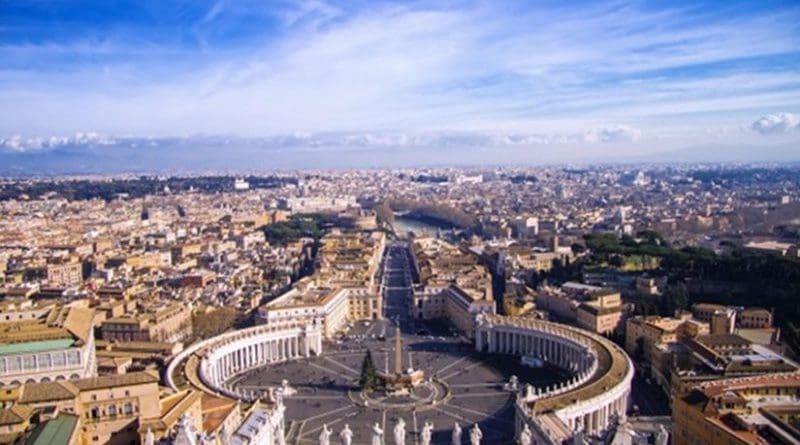
It seems then ~ Q “they were chosen to be sacrificed to appease the god Enki.” En-Q
Looked it up, was confirmed hence the reason why its posted.